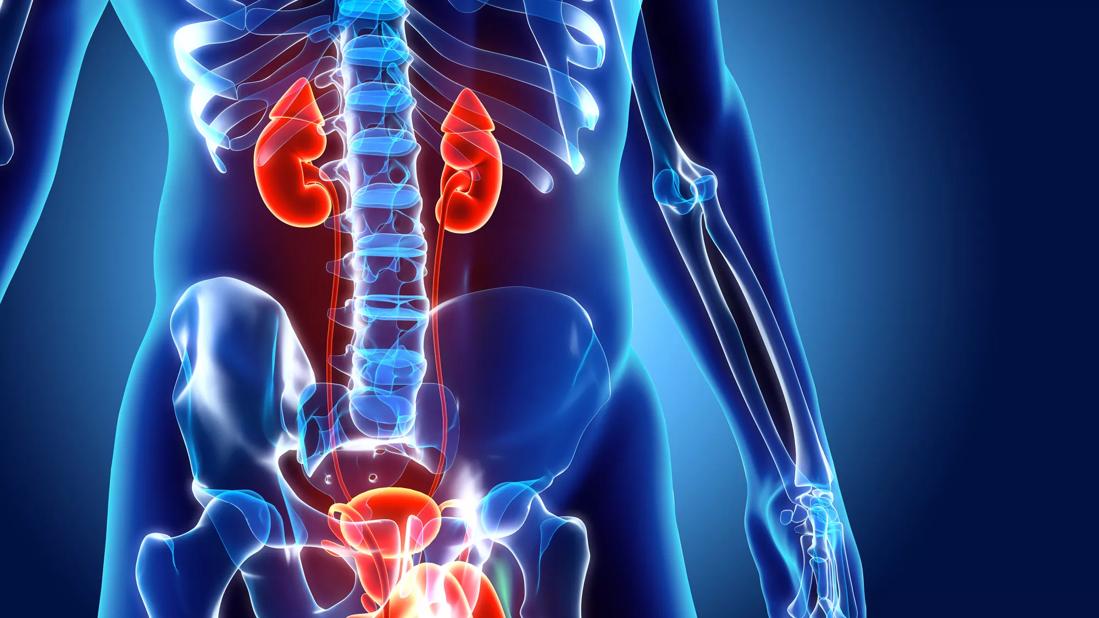A nephrologist at Cleveland Clinic shares possible theories

Patients with more severe cases of COVID-19 may be at greater risk for developing acute kidney injury (AKI). A study recently published in JAMA found that 22% of COVID-19 patients admitted to 12 NYC area hospitals developed AKI, though only 8.5% presented with baseline chronic or end-stage kidney disease.1
Advertisement
Cleveland Clinic is a non-profit academic medical center. Advertising on our site helps support our mission. We do not endorse non-Cleveland Clinic products or services. Policy
“This is on the higher end of reports we have seen thus far,” says George Thomas, MD, nephrologist and Director of the Center for Blood Pressure Disorders at Cleveland Clinic. “It’s concerning for a variety of reasons and certainly complicates treatment and recovery for these patients.”
At this point, there is simply not enough histological data, but Dr. Thomas notes there are several emerging theories that may help explain the high incidence of kidney injury.
Viral infiltration via angiotensin-converting enzyme 2 (ACE2) receptors is one such theory. Studies have already shown that SARS-CoV-2 is gaining access to the respiratory tract by attaching to ACE2 through spike proteins. ACE2 receptors are also expressed in other organs, namely the kidneys. “This is an intriguing mechanistic link between the virus and kidney,” says Dr. Thomas. “However, it doesn’t explain the exact mode of kidney injury.”
Another theory is that COVID-19 pathology mimics that of sepsis, resulting in decreased perfusion of blood and oxygen to the kidneys. This can lead to acute tubular necrosis (ATN), a condition characterized by damage to the tubules, structures that helps regulate kidney function.
The cytokine release theory posits that a patient’s immune system may be responding to the infection with hyper inflammation, inciting a cytokine storm and destroying healthy tissue, which could lead to AKI.
Many patients are also reported to have blood clotting problems, and injury to the lining of the small blood vessels and microthrombi (clot formation in the small blood vessels) may be a possible mechanism of AKI.
Advertisement
Finally, cardiac injury has been reported in some patients with COVID-19, and there is some speculation that AKI may be a result of cardiorenal syndrome.
Of these postulated theories, Dr. Thomas suspects that the development of ATN is common, based on available kidney biopsy reports. “We are still waiting on more data, particularly in the context of the U.S. experience with COVID-19.”
Regardless of COVID-19 status, Dr. Thomas says that volume management, blood pressure stability and medication modification if indicated are all mainstays of renal management for inpatients with AKI. Dialysis becomes the next step if renal function declines to the point that the kidneys are unable to filter toxins or regulate volume status.
“The overall approach is supportive, and dialysis is a supportive measure. It’s doing what the kidneys are supposed to do,” says Dr. Thomas. “This is true of any critically ill patient on dialysis, not just those with COVID-19.”
Patients with more serious cases of COVID-19 may be hemodynamically unstable, and may not be able to follow the usual form of dialysis called intermittent hemodialysis, which is performed a few hours at a time. Instead, they may receive continuous kidney replacement therapy, a prolonged form of dialysis that is usually better tolerated by patients who are particularly ill.
Studies have shown that many COVID-19 patients tend to have comorbidities associated with kidney function, including high blood pressure, diabetes and obesity. Not all of these patients will develop AKI, but if these chronic conditions aren’t appropriately managed, they can compromise kidney health.
Advertisement
Understanding disease transmission, mechanisms of organ injury, and managing care for patients with COVID-19 is an evolving situation. Dr. Thomas stresses that there is still much to learn about the virus and disease process. Larger series from different institutions across the U.S. and more biopsy data will continue to help understand key mechanisms conferring kidney injury in COVID-19 patients.
“In the meantime,” asserts Dr. Thomas “the standard of care for inpatients with elevated risk for AKI with or without COVID-19 should be maintained.”
Advertisement
Advertisement

Patients report improved sense of smell and taste

Clinicians who are accustomed to uncertainty can do well by patients

Unique skin changes can occur after infection or vaccine

Cleveland Clinic analysis suggests that obtaining care for the virus might reveal a previously undiagnosed condition

As the pandemic evolves, rheumatologists must continue to be mindful of most vulnerable patients

Early results suggest positive outcomes from COVID-19 PrEP treatment

Could the virus have caused the condition or triggered previously undiagnosed disease?

Five categories of cutaneous abnormalities are associated with COVID-19